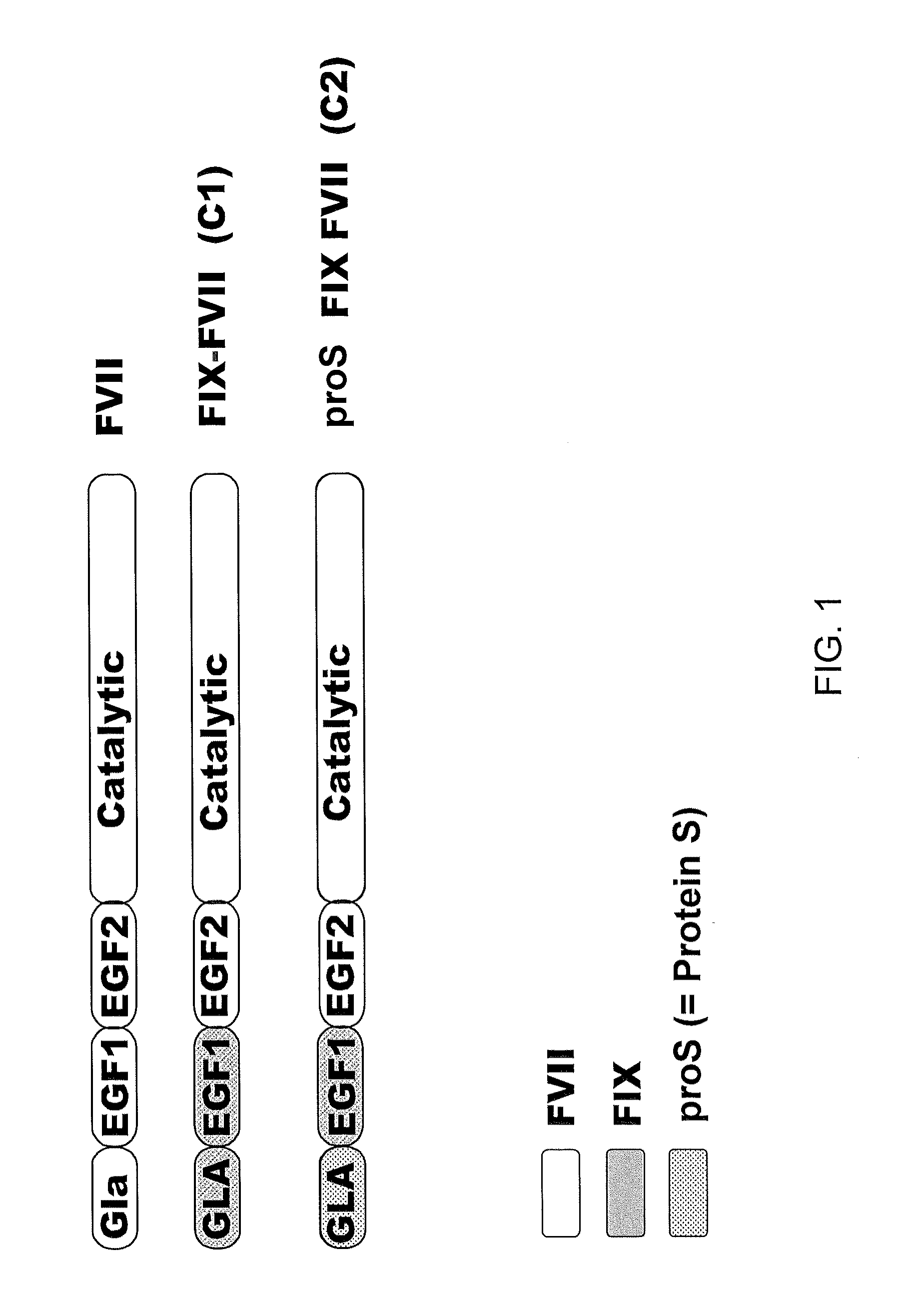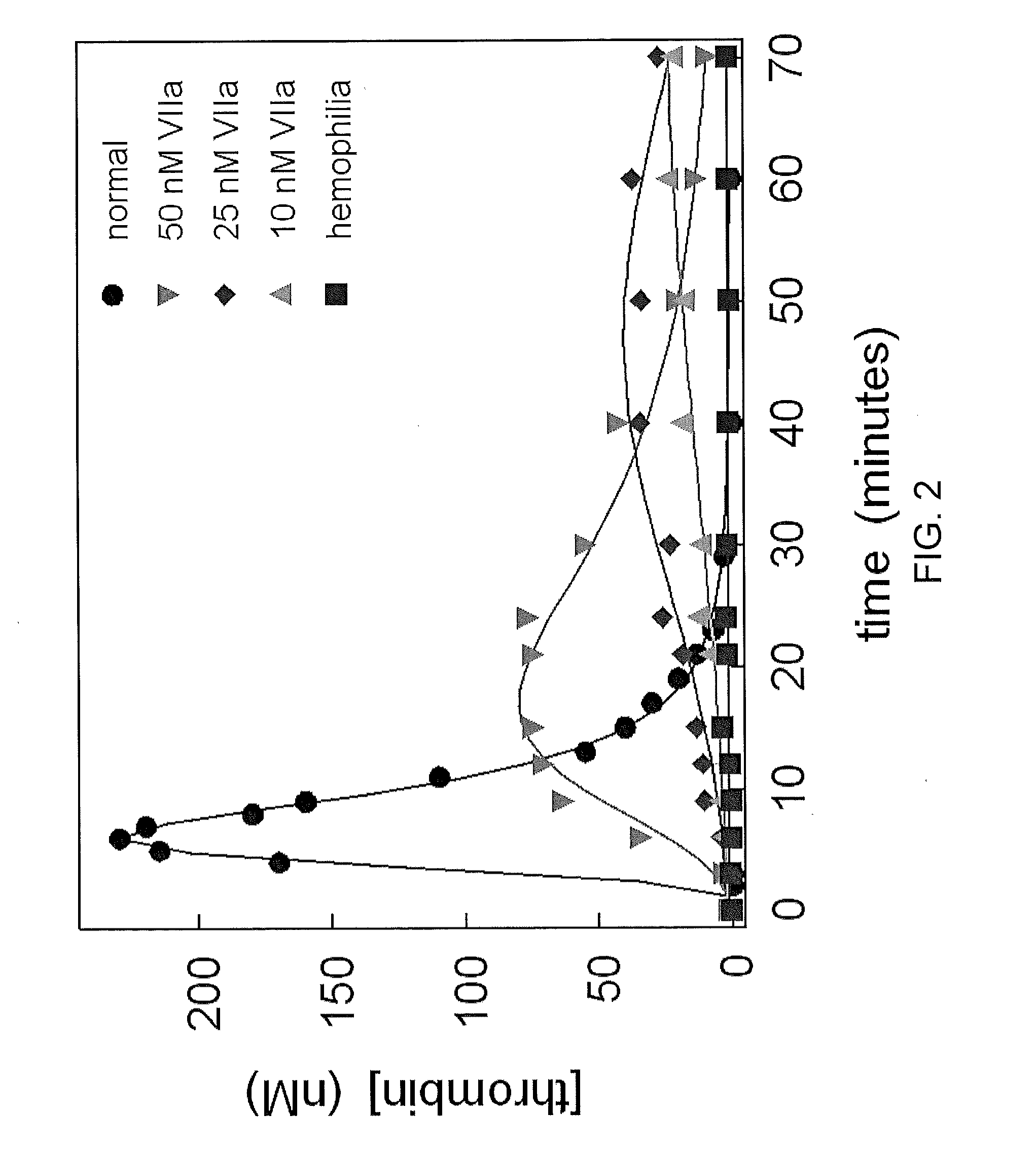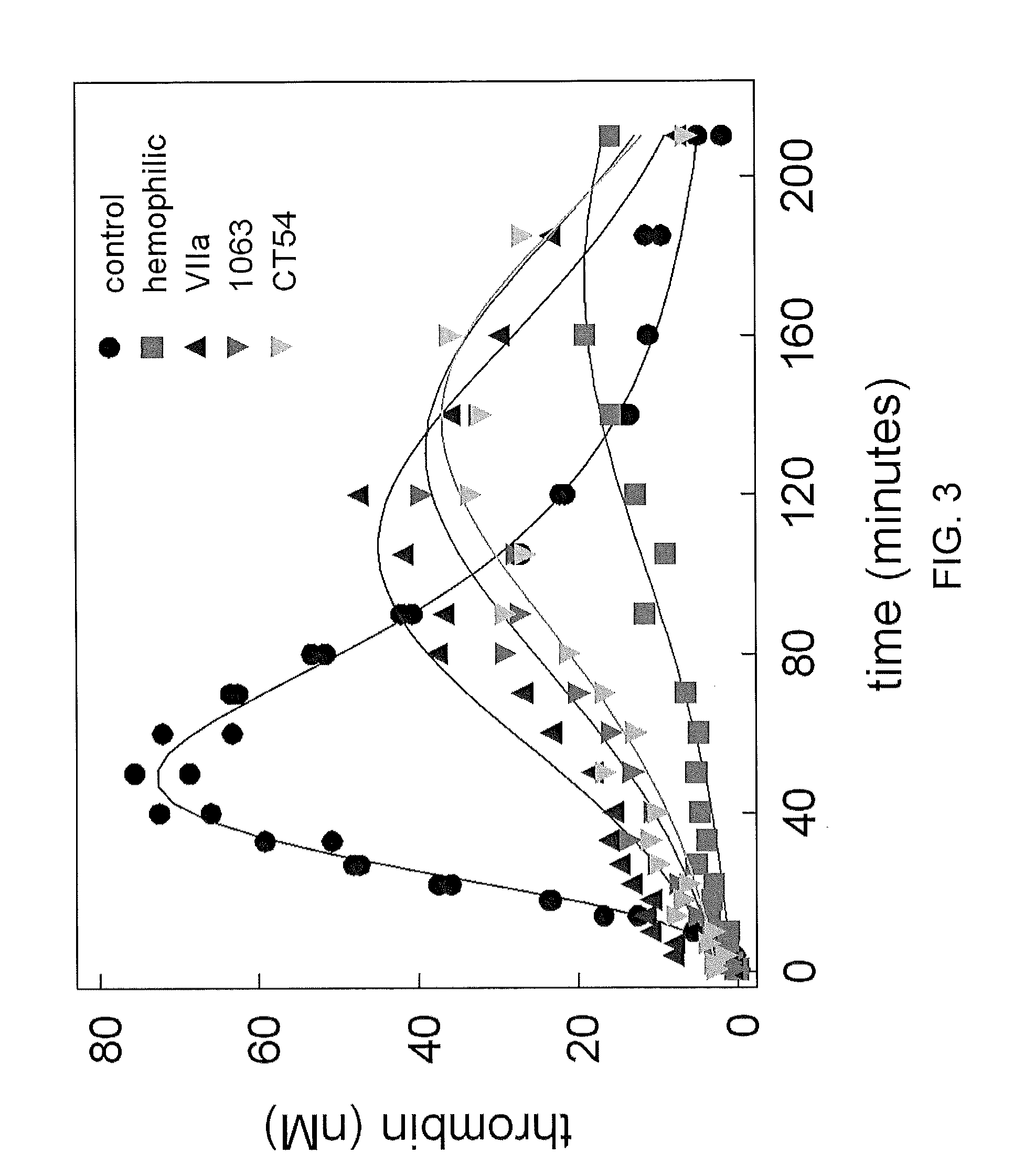Chimeric factor vii molecules
a technology of coagulation factor and chimeric factor, which is applied in the field of chimeric human coagulation factor, can solve the problems of fibrin clot formation, side effects, bleeding, etc., and achieve the effects of reducing the affinity of tissue factor, reducing the risk of complications, and reducing the risk of thrombosis
- Summary
- Abstract
- Description
- Claims
- Application Information
AI Technical Summary
Benefits of technology
Problems solved by technology
Method used
Image
Examples
example i
Construction and Expression of Chimeric Factor VIIa Polypeptides
[0125]The cDNA of both human Factor VII and human Factor IX were obtained and the following unique restriction sites were introduced to facilitate domain exchange:
[0126]BstEII site at the 5′ end of EGF-1 domain (residues 47-49 of Factor VII; residues 48-50 of Factor IX);
[0127]SacI site is at the junction of the EGF-1 and EGF-2 domains (residues 82-83 of Factor VII; residues 83-84 of Factor IX);
[0128]NotI site is at the 3′ end of the EGF-2 domain (residues 135-137 of Factor VII; residues 132-134 of Factor IX.
[0129]Various chimeras were constructed using these restriction sites to exchange domains between Factor VII and Factor IX and are depicted in FIG. 1. The same, or similar restriction sites can be used to exchange domains between Factor VII and Protein S.
[0130]The amino acid sequence of the resulting chimeras are set forth in SEQ ID NO:1 (Factor IX signal, propeptide, GLA and EGF1 domains, with Factor VII EGF2 and ca...
example ii
Thrombin Generation of Factor VIIa Polypeptides
[0132]The thrombin generation of Factor VIIa was determined using an in vitro model of hemophilia. Monocytes were used as a source of tissue factor and combined with unactivated platelets and synthetic plasma containing plasma concentrations of Factors V, VII, IX, VIII, and XI, and plasma concentrations of antithrombin and TFPI. Hemophilic conditions were created by omitting factors VIII and IX.
[0133]Monocytes were prepared by drawing 4 ml of blood from a healthy individual and placing in a sodium citrate tube. The blood was carefully layered on top of 3 ml of Accu-Prep™ Lymphocyte separation medium (Accurate Chemicals, NY, USA) in a 15 ml conical tube and centrifuged at 1500 rpm for 30 minutes. The mononuclear layer was then removed and added to an equal volume of Versene (Lineberger Tissue Culture) at 4° C. and centrifuged at 800 rpm for 10 minutes. The resulting pellet was resuspended in 5 ml of Versene at 4° C. and centrifuged at 80...
example iii
Thrombin Generation of Chimeric Factor VIIa Polypeptides
[0139]The thrombin generation of the chimeric proteins produced in Example I was determined using an in vitro model of hemophilia described in Example II. The addition of 10 nM of a chimeric Factor VIIa containing the EGF-2 and catalytic domains of Factor VII and the GLA and EGF-1 domains of Factor IX, or a chimeric Factor VIIa containing the GLA, EGF-2 and catalytic domains of Factor VII and the EGF-1 domain of Factor IX had a similar activity to 50 nM of wild-type Factor VIIa. (FIG. 3).
[0140]Looking at peak thrombin production in relation to the control, neither wild-type Factor VIIa, nor the chimeric Factor VIIa polypeptides tested restored peak thrombin production to the level of the control. However, 10 nM of a chimeric Factor VIIa containing the EGF-2 and catalytic domains of Factor VII and the GLA and EGF-1 domains of Factor IX, or a chimeric Factor VIIa containing the GLA, EGF-2 and catalytic domains of Factor VII and t...
PUM
| Property | Measurement | Unit |
|---|---|---|
| concentration | aaaaa | aaaaa |
| concentrations | aaaaa | aaaaa |
| weight | aaaaa | aaaaa |
Abstract
Description
Claims
Application Information
 Login to View More
Login to View More - R&D
- Intellectual Property
- Life Sciences
- Materials
- Tech Scout
- Unparalleled Data Quality
- Higher Quality Content
- 60% Fewer Hallucinations
Browse by: Latest US Patents, China's latest patents, Technical Efficacy Thesaurus, Application Domain, Technology Topic, Popular Technical Reports.
© 2025 PatSnap. All rights reserved.Legal|Privacy policy|Modern Slavery Act Transparency Statement|Sitemap|About US| Contact US: help@patsnap.com



